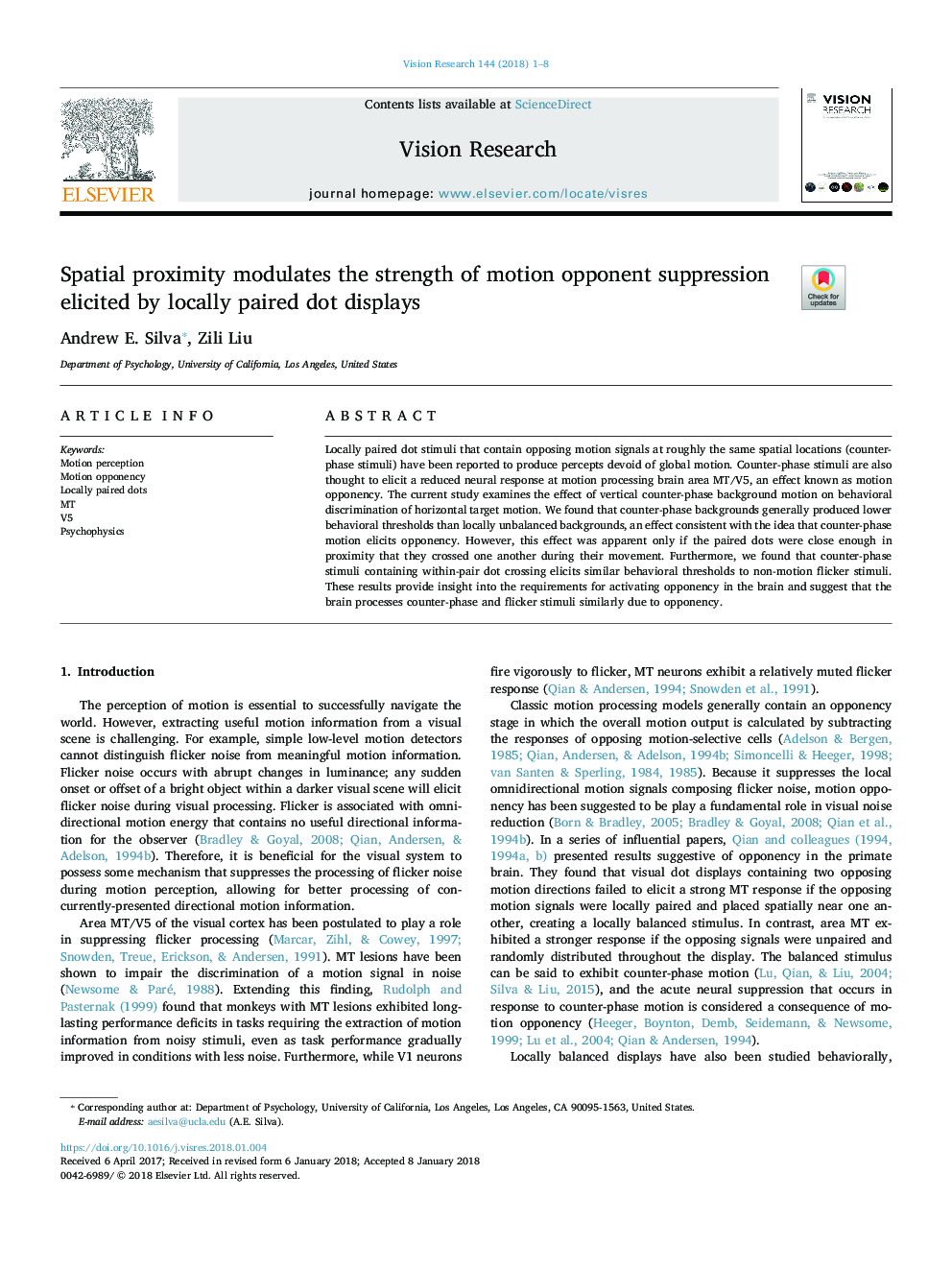| کد مقاله | کد نشریه | سال انتشار | مقاله انگلیسی | نسخه تمام متن |
|---|---|---|---|---|
| 8795315 | 1603155 | 2018 | 8 صفحه PDF | دانلود رایگان |
عنوان انگلیسی مقاله ISI
Spatial proximity modulates the strength of motion opponent suppression elicited by locally paired dot displays
ترجمه فارسی عنوان
مجاورت فضایی، قدرت تحرک حاکم حرکتی را که ناشی از نمایش داده شده به صورت محلی است، مدوله می کند
دانلود مقاله + سفارش ترجمه
دانلود مقاله ISI انگلیسی
رایگان برای ایرانیان
کلمات کلیدی
موضوعات مرتبط
علوم زیستی و بیوفناوری
علم عصب شناسی
سیستم های حسی
چکیده انگلیسی
Locally paired dot stimuli that contain opposing motion signals at roughly the same spatial locations (counter-phase stimuli) have been reported to produce percepts devoid of global motion. Counter-phase stimuli are also thought to elicit a reduced neural response at motion processing brain area MT/V5, an effect known as motion opponency. The current study examines the effect of vertical counter-phase background motion on behavioral discrimination of horizontal target motion. We found that counter-phase backgrounds generally produced lower behavioral thresholds than locally unbalanced backgrounds, an effect consistent with the idea that counter-phase motion elicits opponency. However, this effect was apparent only if the paired dots were close enough in proximity that they crossed one another during their movement. Furthermore, we found that counter-phase stimuli containing within-pair dot crossing elicits similar behavioral thresholds to non-motion flicker stimuli. These results provide insight into the requirements for activating opponency in the brain and suggest that the brain processes counter-phase and flicker stimuli similarly due to opponency.
ناشر
Database: Elsevier - ScienceDirect (ساینس دایرکت)
Journal: Vision Research - Volume 144, March 2018, Pages 1-8
Journal: Vision Research - Volume 144, March 2018, Pages 1-8
نویسندگان
Andrew E. Silva, Zili Liu,
